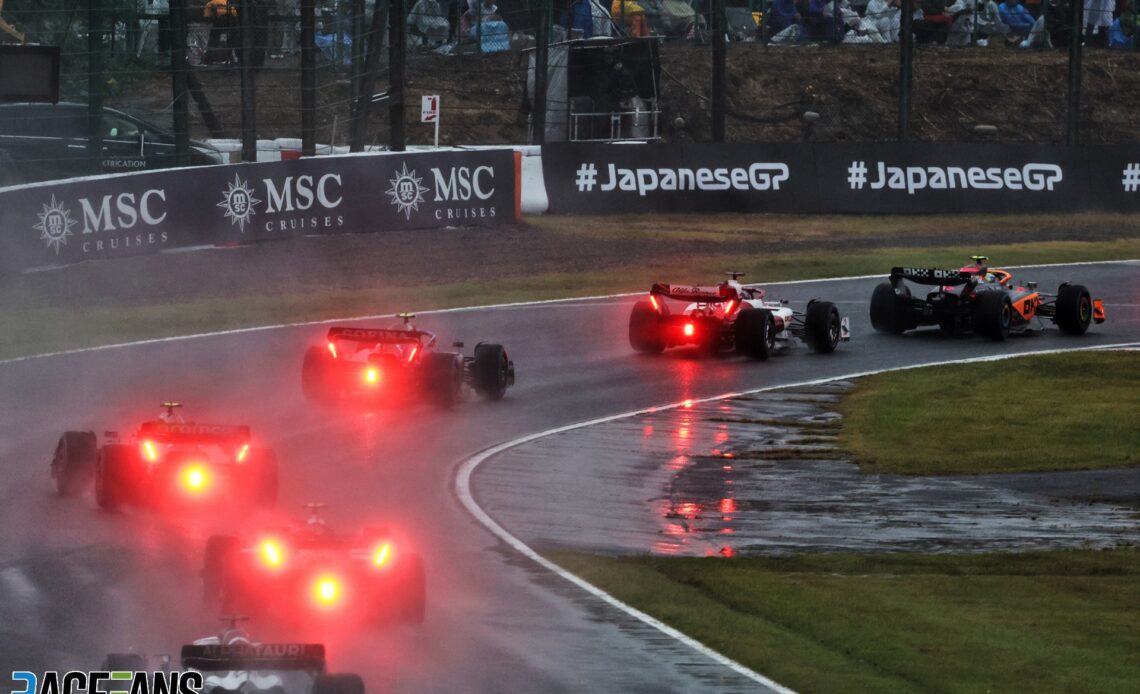The FIA has announced immediate changes to how Safety Car periods will be handled after investigating the use of recovery vehicles during the Japanese Grand Prix earlier this month.
Several drivers strongly criticised the use of a crane to recover a crashed car in wet conditions at the track. Pierre Gasly was especially critical of the incident, as while most drivers passed the vehicle at reduced speed behind the Safety Car, he was travelling more quickly as he had pitted and was driving at increased speed in order to rejoin the queue of cars ahead.
The investigation found that “all FIA race procedures were followed” during the race in Japan, and the decision to use a standing start was correct, despite Carlos Sainz Jnr’s crash halfway around the opening lap which led to the recovery vehicle being sent on-track. However the FIA admitted “it would have been prudent to have delayed the deployment of the recovery vehicles on track” as “the weather conditions were changing” at the time.
The incident drew parallels with Jules Bianchi’s collision with a recovery vehicle at the circuit in 2014, in which he sustained fatal injuries. “The review panel acknowledged that having recovery cranes on track at Suzuka during the weather conditions is a sensitive matter in view of the tragic incidents of the past,” the FIA noted.
It also acknowledged that race control failed to realise one car was not in the queue behind the Safety Car. “Given the track conditions and the overall visibility for drivers, marshals and recovery staff at the time, initially under a Safety Car followed by a red flag, and as efforts were focused on safe recovery, the AlphaTauri of Pierre Gasly in the pit lane was not immediately detected,” it said.
A series of new measures will be taken from this weekend as a result of the report’s findings. This will include using the official messaging system and FIA intercom system to notify teams when a recovery vehicle has been sent onto the track. Teams will be obliged to inform their drivers when this happens.
A live monitoring window for use during Virtual Safety Car and Safety Car periods has been developed. It will allow the FIA F1 race director and FIA Race Operations Centre to monitor the status of all cars on the track, behind the Safety Car, and in the pits.
Advert | Become a RaceFans supporter and
The roles and responsibilities in race control and the ROC during Virtual Safety Car and Safety Car periods will be…
Click Here to Read the Full Original Article at RaceFans…

